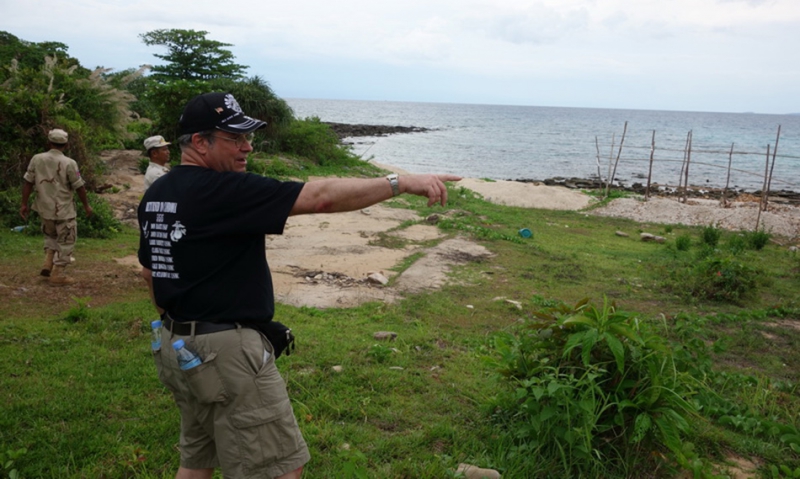
40th anniversary return to Koh Tang
The seizure of the USS Mayaguez in May 1975 and the rescue of her captured crew resulted in the last battle of the Vietnam War. The 41 U.S. servicemen killed in that operation hold the dubious distinction of being the last names on “The Wall,” the Vietnam Veterans Memorial. Recently on the 40th anniversary, seven veterans of that battle returned to Koh Tang Island, Cambodia, to revisit the site and to address their memories, fears and still-unanswered questions.
Forty years to the day, instead of landing in helicopters under heavy fire, the returning veterans approached the beautiful tropical island 29 miles off the coast of the border between Cambodia and Vietnam, in a large power boat as guests of the Cambodian government. Emotions were high as the small island came into view and memories of harsh combat came flooding back. The ill-advised and hastily thrown together operation, just two weeks after the fall of Saigon, was to take back the ship and to prevent the USS Mayaguez crew from being moved to the mainland. Memories of North Korea’s 1968 capture of the USS Pueblo, and the subsequent torture of its crew motivated decision-makers in Washington to act quickly. Poor intelligence and a rushed operation plan that utilized the only American assets in the area thrust inexperienced young Marines, who were undergoing training on Okinawa, into a heliborne assault against a vastly superior, experienced and well-armed force of Khmer Rouge. The first four helicopters of the first wave were all shot down.
The island today is mostly unchanged but plans and some construction has started, with Russian money, to turn it into a tourist vacation destination. Presently except for a few fishermen and their families living in huts, a small Cambodian military garrison is all that occupies the somewhat remote island. The returning veterans were treated to a welcome speech by the military commander after which the veterans, with an individual military escort, were permitted to walk through the primarily thick jungle and explore the island. Veterans sought out the locations where they had landed and dug in for the 14-hour firefight, exactly 40 years earlier. With temperatures over 100 degrees, the heat, the sites and the smells all brought back memories of their combat experience.
One of the travesties of that operation was that during the withdrawal that night under heavy fire, three Marines were left behind in the chaos of the extraction. How that happened and their ultimate fate has weighed heavily on the minds of all the veterans of the Koh Tang Operation.
The defensive positions held by the Marines that day were basically in the shape of a horseshoe with the enemy fire and heavy jungle to their front and the waters of the Gulf of Thailand to their rear. The returning veterans walked the lines of their old positions. Some of the locations where foxholes had been dug are still recognizable and even 40 years later shell casings and other evidence of the battle can be seen.
At the southern end of the perimeter, the last known location of the missing three-man machine gun team, the veterans nailed a plaque to a tree to commemorate their return and to memorialize those lost. Emotions were high when sap from the nail holes in the tree ran a bright red, reminding those present of the American blood lost in the rescue operation.
Also present was Em Son, identified as the commander of the Khmer Rouge Regiment that defended Koh Tang. He was questioned by the returning veterans and was evasive when asked specific questions, especially the fate and burial locations of the three missing Marines. He had admitted previously to personally killing one of them and it is worth noting that he currently is under investigation for war crimes. The Joint POW/MIA Accounting Command has made several trips to Koh Tang Island searching for remains but five Americans still remain unaccounted for. Some of the questions of the returning veterans remain unanswered. But a common view was that the recent return to the site of their combat experience, with a group of their fellow veterans, will do much to relieve the burdens that weighed heavily on their minds all these years.
About the author: Daniel J. Hoffman is past president of the Koh Tang/Mayaguez Veteran’s Organization and served as an infantry platoon commander during the operation.
